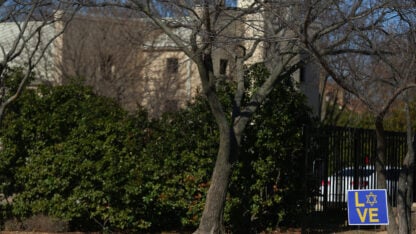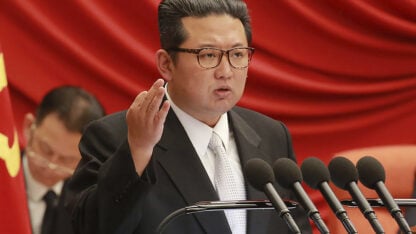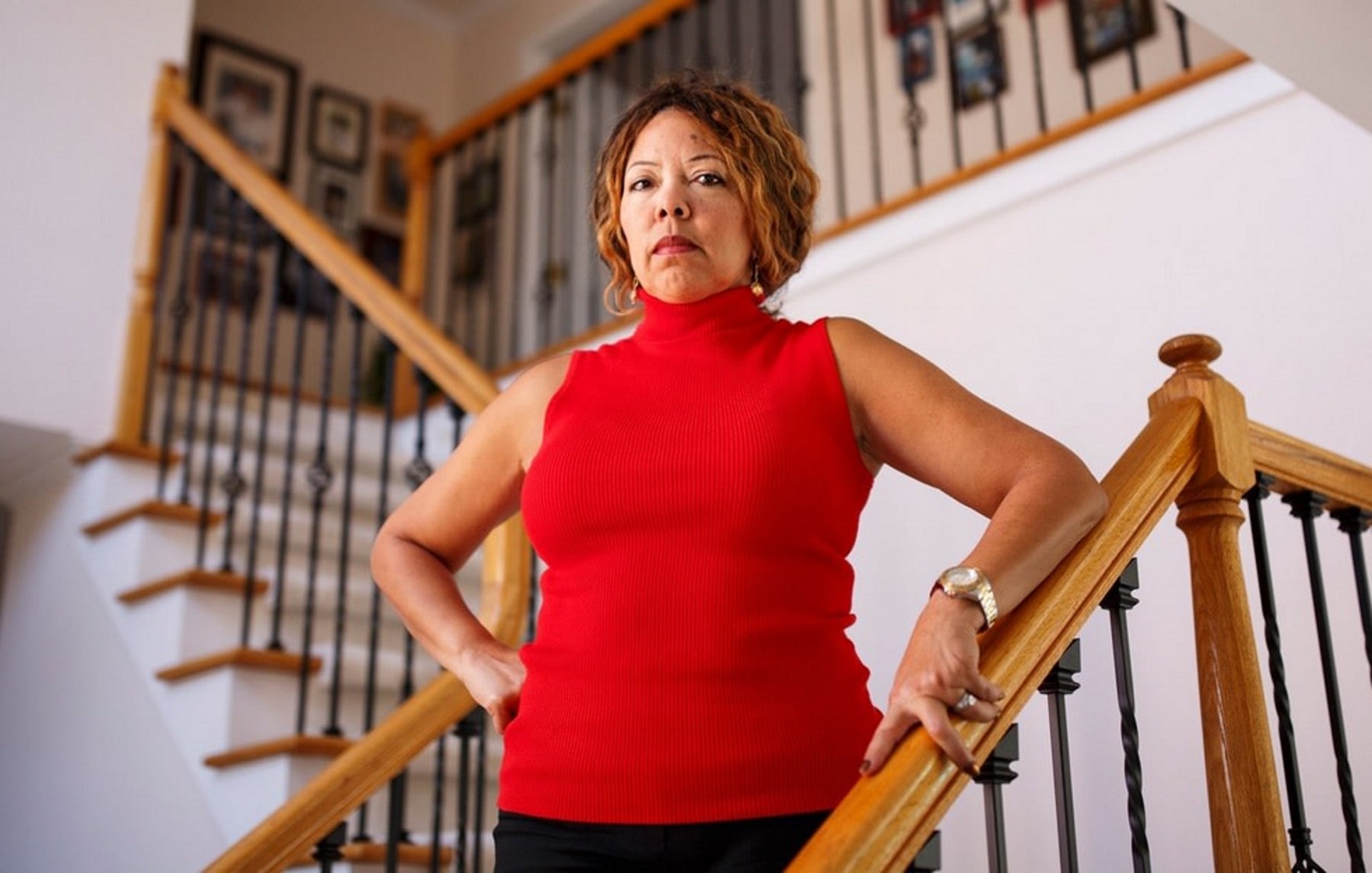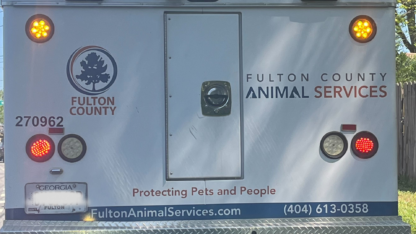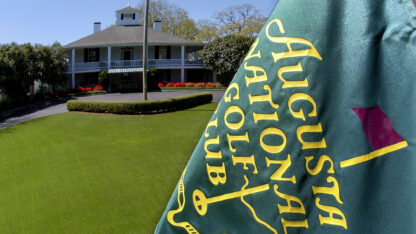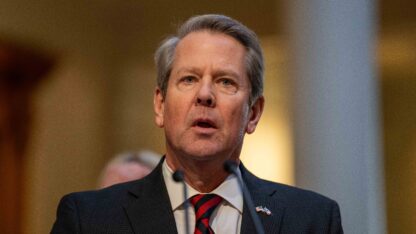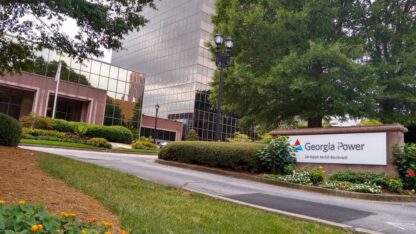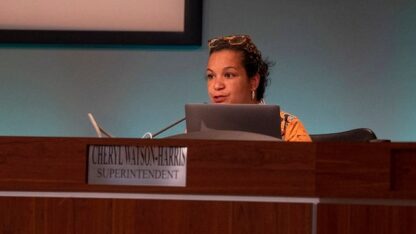Why Puerto Rico leads the U.S. in COVID vaccine rate — and what states can learn

A wooden Puerto Rican flag is displayed on the dock of the Condado lagoon, where multiple selective blackouts have been recorded in the past days, in San Juan, Puerto Rico, Thursday, Sept. 30, 2021. (AP Photo/Carlos Giusti)
The highest rate of COVID-19 vaccination in the United States is not in a liberal-leaning Northeastern or West Coast state.
It’s in Puerto Rico, where more than 73% of the total population is fully vaccinated. The U.S. national average is just over 57%.
The high vaccination rate stands in contrast to Puerto Rico’s initial vulnerability to the coronavirus. Four years after Hurricane Maria destroyed the electricity grid, power outages still occur regularly. Many municipalities face a shortage of health care facilities and workers.
The U.S. territory responded with some of the strictest pandemic measures in the country, including nonessential business closures, stay-at-home orders and mask mandates.
Mónica Feliú-Mójer is the director of communications and science outreach for the non-profit organization, Ciencia Puerto Rico, and says that people responded pretty well to the measures.
“There was so much concern with, when the pandemic started, that we have such a fragile health care system,” she told NPR’s Audie Cornish on All Things Considered.
“There’s a lot of concern that the pandemic could cause it to collapse. So I think everyone pretty much rallied to do what needed to be done so that we could keep that health care system from collapsing and, you know, from having the worst happen in Puerto Rico.”
The high vaccination rate also correlates with one of the country’s lowest COVID-19 community transmission rates, according to data from the Centers for Disease Control and Prevention, and one of the country’s lowest test positivity rates, hovering around 2%.
The head of the scientific coalition advising Puerto Rico on COVID-19 (and the founder of Ciencia Puerto Rico), Daniel Colón-Ramos, says this correlation is not a coincidence.
“It represents a lot of saved lives,” Colón-Ramos told CNN.
“It’s really about the fact there are hundreds of people — if not thousands — right now walking around somewhere in Puerto Rico and they wouldn’t be there if it wasn’t for these efforts.”
What the mainland can learn from Puerto Rico
Feliú-Mójer says one reason for the success with vaccination is a difference in political culture to the mainland United States. In the continental U.S., Republicans have consistently fought mask-wearing rules and vaccine mandates, citing personal liberty.
“We don’t see that correlation between political ideologies and people’s willingness to get vaccinated or use masks,” she said. “It’s not like the issue of COVID and vaccination hasn’t been politicized. It’s just been politicized in a different way, not in terms of identities or ideologies, political ideologies.”
While Feliú-Mójer notes that there are small but vocal anti-vaccine groups in Puerto Rico, she also points to a “really good” historical acceptance of vaccines. She says a key is engaging people on their values, beliefs or identities rather than allowing them to contribute to polarization. Another is fostering solidarity in the public health effort.
“We have to take differentiated strategies to reach different audiences and understand what drives them to get vaccinated or not,” she said. “And then I think broad coalitions … different groups of people and segments of society in Puerto Rico came together to work towards preventing COVID-19, vaccinating people against COVID-19. And I think those broad coalitions are going to be really important to get vaccination levels higher in the United States.”
Its successes aside, Feliú-Mójer noted that COVID-19 has still killed over 3,200 people in Puerto Rico. And she remains concerned about vaccine equity – particularly in rural communities, or among older adults who can’t get out of their homes or don’t know how to make an appointment. She says the high overall vaccination rate can hide gaps in coverage.
“You have to look beyond that big number,” she said in a separate interview with NPR. “But then you look at certain municipalities like Loíza, a town in coastal northern Puerto Rico that’s predominantly Black and [a] very poor municipality. Their vaccination rate is about 55%. And so when you look at some of the social determinants that impact communities like Loíza, then they’re not doing as well.”
According to the 2020 census, the poverty rate in Puerto Rico stands at 43.5%, while the official poverty rate in the U.S. is much lower, at 11.4%. The census also counted a population just shy of 3.3 million people — more than 21 states.
Those are important numbers to consider in weighing Puerto Rico’s overall vaccination success, says Daniel Colón-Ramos, the Yale medical school professor and adviser to the Puerto Rican government.
“The experience with vaccines in places like Puerto Rico and the Navajo [N]ation shows that when resources are distributed equitably AND when local scientists and health care leaders are able to direct their own strategies, they can perform better than most US jurisdictions,” Colón-Ramos wrote on Twitter.
9(MDAxODM0MDY4MDEyMTY4NDA3MzI3YjkzMw004))
